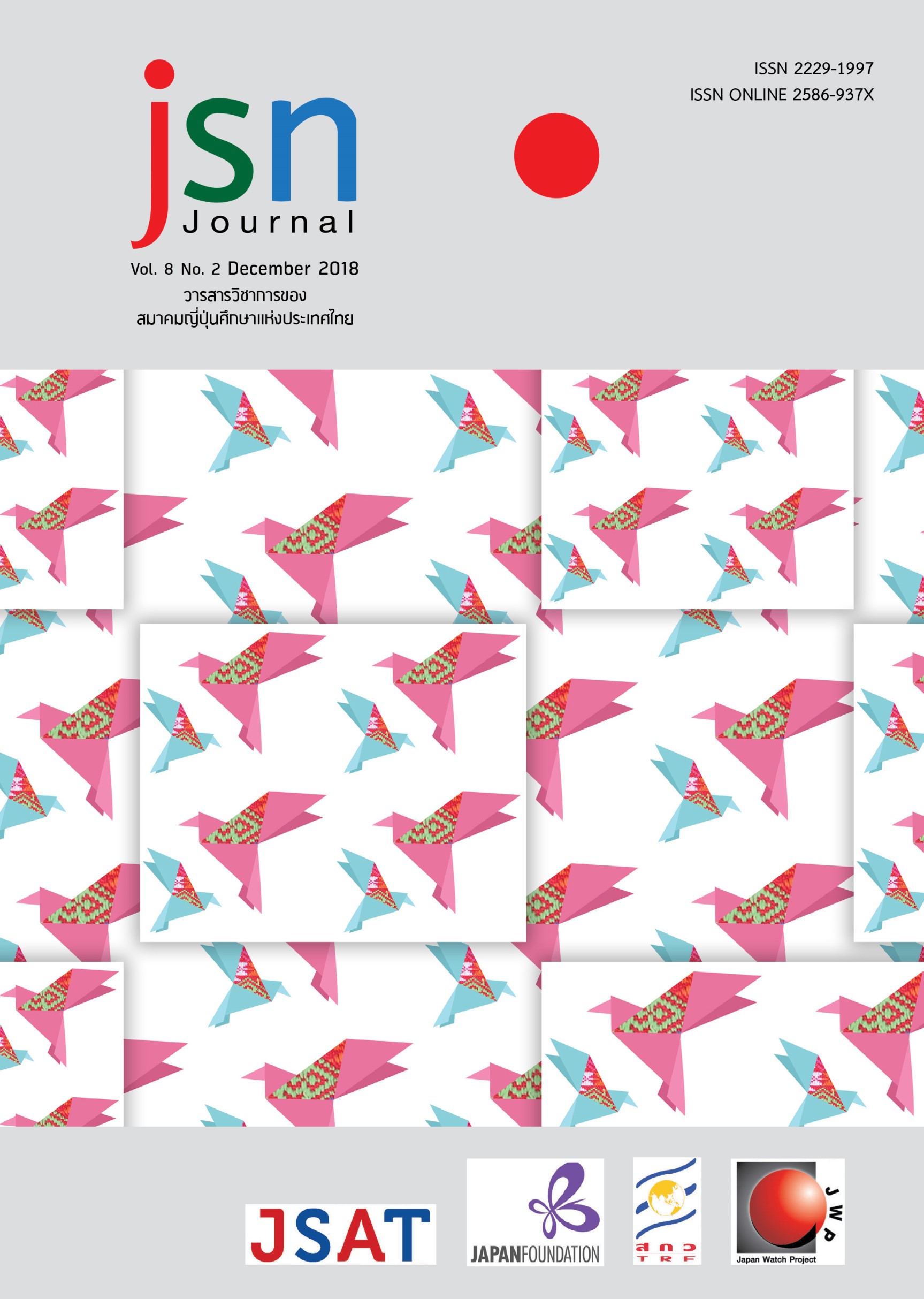The perspective on the elderly person in "Tsurezuregusa":Wisdom from the old age
Main Article Content
Abstract
This article aimed to study the perspectives of a monk, “Kenkō,” on elderly people in a collection of essays, called “Tsurezuregusa,” during the Nanboku-chō period in Japan. The results showed that Kenkō used a criticism and warning approach to tell the stories about elderly people in order to make the elderly in society realize what they should know and prepare for in aspects of physical conditions, social relationships, capabilities, and mental state. However, in chapter 172, which is the last chapter about the elderly people, instead of using the criticism and warning approach, Kenkō chose to compare the strengths and weaknesses of the elderly people with those of young people. Kenkō also suggested that the elderly people are superior to young people in terms of wisdom. In addition, when comparing the wisdom of the elderly people with the term “wisdom” that was used throughout the essays, it was found that the term “wisdom” in chapter 172 was associated with letting go of attachments. The wisdom of the elderly people did not result from the awareness of reality but arose when their mental state was getting weaker over time due to natural laws, which ultimately made the elderly people have peaceful mind, let go of attachments, and reach a state of wisdom. Living in accordance with natural laws is the concept of Taoism. However, the way Kenkō combined the natural laws with the concept of wisdom until a new form of wisdom, called “wisdom of aging,” was discovered clearly reflected that he had deep and insightful perspectives and could thoroughly look at things in different dimensions.
Article Details
ข้อความและข้อคิดเห็นต่างๆ ในบทความเป็นของผู้เขียนบทความนั้นๆ ไม่ใช่ความเห็นของกองบรรณาธิการหรือของวารสาร jsn Journal
References
Hideo, K. Yasuaki, N. Kousaku, Y. (1971). Shimpensenshūnihonkotenbungakuzenshū Hōjōki, Tsuerezuregusa, Shōbōgenzōzuimonki, Tannishō [The Collections of Japanese Classical Literature Hōjōki, Tsuerezuregusa, Shōbōgenzōzuimonki, Tannishou]. Tokyo: Shōgakkan.
Hiroyuki, I. (1973). Tsurezuregusa ni okeru seishun no shudai to rōnen no jikaku [The topic of youth and the awareness of elder person in Tsurezuregusa]. Seijōkokubungakuronshū, 6, 103-129.
Jiwon, H. (2003). “Tsurezuregusa” ni mirareru rōjin to wakamono - Dai hyakunanajūni dan wo chūshin ni - [ The elder person and the youth in “Tsurezuregusa” – Focus on passage 172nd–]. Baikōgakuindaigaku Nihonbungakkai, 38, 23-31.
Kenji, T. (1989). Makoto no michi–Ju Butsu Rōsō– [The way of truth–Confucianism, Buddism, Taoism–]. Kokubungaku kaishaku to kyouzai no kenkyū, 34-3, 60-66.
Kousaku, Y. (1967). Tsurezuregusazenchuushaku jōkan gekan [An annotated edition of Tsurezuregusa Volume1, 2]. Tokyo: Kadogawashoten.
Mitsuji, F Hiroshi, K. (2004). Rōshi Sōshi sekaikotenbungakuzenshuu [Laozi Zhuangzi The Collections of World Classical Literature ]. Tokyo: Chikumashobou.
Naoko, O. (1978). “Tsurezuregusa” to Rōsōshisō [“Tsurezuregusa” and Laozi, Zhuangzi’s thought]. Miyagigakuinjoshidaigaku, 13, 45-52.
Seiko, S. (1961). “Hōjōki” “Tsurezuregusa” ni okeru mujōkan no hikaku [The comparison of impermanence in“Hōjōki”and“Tsurezuregusa”]. Miyagigakuenkokubungakkai, 19, 15-21.
Shizuo, N. (1984). Kenkō no rōjinron ni tsuite- [Concerning Kenkō’s theory of the elder person]. Kokubungaku kaishaku to kanshō, 30-12, 51-56.
Yuko, S. (2005). Kenkō – tsuyu mo wagami mo okidokoro nashi [Kenkō– No place for neither dewdrop nor myself ]. Tokyo: Minervashobō.


